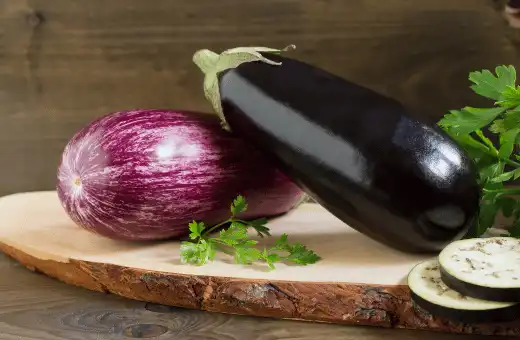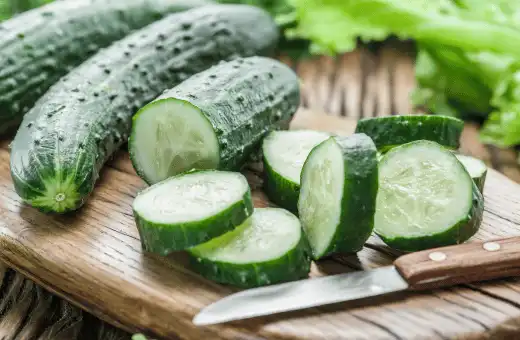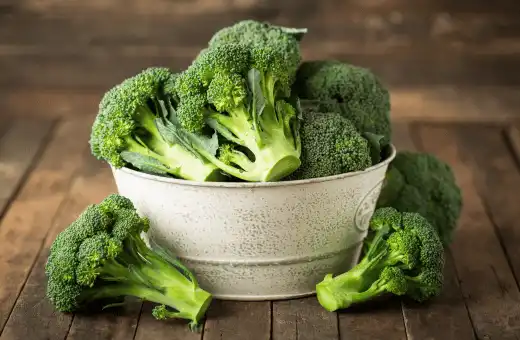Zucchini is a versatile and healthy ingredient used in many dishes, from stir-fries to muffins.
However, sometimes finding fresh zucchini at the grocery store can be challenging, or you might want to switch it up with a different vegetable.
Luckily, there are many healthy alternatives that can substitute for zucchini without compromising taste or nutrition.
Here are 16 ideal substitutes for zucchini with ratios and instructions on how to use them.
In short, " What can I use instead of zucchini?" Squash, Cucumbers, Carrots, Eggplant, Broccoli, stems, Sweet Potatoes, Butternut squash, Green beans, Bell peppers, Cauliflower, Yellow Squash, Cucumber and many more.
What is zucchini, and what does zucchini taste like?
Zucchini is a squash that belongs to the cucurbit family. It is green in color and has a light, slightly sweet taste when eaten raw.
When cooked, zucchini takes on a mild flavor that can be enhanced with seasonings like garlic or herbs.
It also has a slightly crunchy texture, so it makes for a great substitute for pasta in dishes like lasagna or noodle-free “zoodles”.
Zucchini is also commonly boiled, fried, grilled or stuffed and baked, as well as added to soups and casseroles.
Uses of zucchini
Zucchini is a versatile vegetable that can use in a wide range of recipes.
It can be sliced, diced, shredded, or spiralized for use in salads, stir-fries, soups, casseroles and even desserts.
Zucchini is especially popular as an ingredient for pizza crusts and bread due to its neutral flavor.
It is also perfect for replacing pasta with zoodles (zucchini noodles) in your favorite Italian recipes.
Nutritionally dense, zucchini is an excellent source of manganese and vitamin C as well as potassium and dietary fiber.
It also contains several important phytochemicals like carotenoids and flavonoids, which are beneficial to overall health.
Furthermore, zucchini has low calories and carbs, making it an ideal food for those watching their weight.
The mild flavor of zucchini makes it suitable for adding to savory dishes like omelets or quiches, but it can also be combined with sweet ingredients like honey or chocolate chips to make delicious cakes or muffins.
Grilling slices of the vegetable creates a flavorful side dish, and adding cubes into casseroles adds nutrition without taking away from the flavor of other ingredients.
Where to buy zucchini?
If you are looking for where to buy zucchini, there are a few different places you can go. Many specialty food stores carry it, as do some international grocery stores.
You can also order online from many retailers that provide a variety of diverse flavors and types of zucchini.
Best substitutes for zucchini
1. Squash – a good substitute for zucchini

Summer squash is a close relative of zucchini and has a similar taste and texture.
Ratio or measurement: To substitute for 1 cup of chopped zucchini, use 1 cup of chopped summer squash.
It works well in dishes like stir-fries, frittatas, and soups.
2. Try Carrots to replace the taste of zucchini
Carrots are a slightly sweet vegetable that can add a hint of sweetness to your dishes.
Ratio or measurement: To substitute for 1 cup of chopped zucchini, use 1 cup of grated carrots.
They work well as a substitute for zucchini in cakes, muffins, and bread.
3. Eggplant

Eggplant is another close relative of zucchini that has a similar texture and taste.
Ratio or measurement: To substitute for 1 cup of chopped zucchini, use 1 cup of chopped eggplant.
It works well in dishes like lasagna, stir-fries, and curries.
4. Broccoli stems – a great alternative to zucchini
Broccoli stems are often overlooked but can be a healthy and tasty substitute for zucchini.
Ratio or measurement: To substitute for 1 cup of chopped zucchini, use 1 cup of chopped broccoli stems.
They work well in dishes like stir-fries, soups, and stews.
5. Sweet Potatoes
Sweet potatoes are another healthy substitute for zucchini.
Ratio or measurement: To substitute for 1 cup of chopped zucchini, use 1 cup of chopped sweet potatoes.
They are slightly sweeter than zucchini and work well in dishes like casseroles, stews, and curries.
6. You can use Butternut squash instead of zucchini
Butternut squash is another close relative of zucchini with a slightly sweet taste.
Ratio or measurement: To substitute for 1 cup of chopped zucchini, use 1 cup of chopped butternut squash.
It works nicely in dishes like soups, stews, and casseroles.
7. Green beans

Green beans are a crunchy and healthy vegetable that can replace zucchini in stir-fries, soups, and vegetable sides.
Ratio or measurement: To substitute for 1 cup of chopped zucchini, use 1 cup of chopped green beans.
Explore more: Best substitute for butter beans
8. Bell peppers – similar taste to zucchini
Bell peppers are a colorful and flavorful substitute for zucchini in dishes like stir-fries, frittatas, and salads.
Ratio or measurement: To substitute for 1 cup of chopped zucchini, use 1 cup of chopped bell peppers.
9. Cauliflower
Cauliflower is another healthy substitute for zucchini in dishes like stir-fries, soups, and curries.
Ratio or measurement: To substitute for 1 cup of chopped zucchini, use 1 cup of chopped cauliflower.
10. Yellow Squash – an ideal replacement for zucchini
Similar in taste and texture to zucchini, yellow squash can be sliced, diced, spiralized, or grated.
Ratio or measurement: The ratio of yellow squash to zucchini is 1:1.
To avoid a soggy dish, pat the squash dry with a paper towel before cooking. Use it in recipes that call for zucchini, such as ratatouille, frittata, or muffins.
11. Cucumber

Believe it or not, cucumber can be an excellent substitute for zucchini in salads or raw dishes. It’s a refreshing and hydrating vegetable that pairs well with herbs, lemon juice, and olive oil.
Ratio or measurement: The ratio of cucumber to zucchini is 2:1.
Keep in mind that cucumber has a higher water content, so you may need to adjust the seasoning.
12. Carrots – a tasty substitute for zucchini
If you’re looking for a vibrant and crunchy substitute for zucchini, carrots are your best bet.
Ratio or measurement: The ratio of carrots to zucchini is 1:1.
Keep in mind that carrots have a sweeter taste than zucchini, so you may need to adjust the seasoning. Julienne or grate them and use them in recipes such as slaws, salads, or stir-fries.
13. Mushrooms
For a meaty and earthy alternative to zucchini, try mushrooms. Slice or chop them and use them in recipes such as burgers, pasta dishes, or omelets.
Ratio or measurement: The ratio of mushrooms to zucchini is 1:1.
Keep in mind that mushrooms release water when cooked, so you may need to sauté them separately and drain the liquid before adding them to the dish.
14. Radishes – gives you a similar taste to zucchini
If you’re looking for a peppery and crunchy substitute for zucchini, radishes are a great option. Slice or shred them and use them in recipes such as salads, tacos, or spring rolls.
Ratio or measurement: The ratio of radishes to zucchini is 2:1.
Keep in mind that radishes have a strong flavor that may overpower other ingredients, so use them sparingly.
15. Broccoli

For a versatile and nutritious substitute for zucchini, broccoli is a winner. Chop or steam it and use it in recipes such as stir-fries, frittatas, or quiches.
Ratio or measurement: The ratio of broccoli to zucchini is 1:1.
Keep in mind that broccoli has a firmer texture than zucchini, so adjust the cooking time accordingly.
Tips on How to Choose the Most Suitable Substitution Option for Zucchini
When choosing a substitution option for zucchini, consider the desired texture, flavor, and cooking method of your recipe. Here are some tips to help you choose a suitable substitute:
1. Texture: Zucchini has a crisp, tender texture when cooked. Look for substitutes with a similar texture, such as yellow squash or cucumber. They can provide a similar crunch and mouthfeel to your dish.
2. Flavor: Zucchini has a mild, slightly sweet flavor. To maintain a similar taste profile, consider substitutes like yellow squash, pattypan squash, or chayote squash.
They have a mild flavor that complements many dishes.
3. Cooking method: Consider the cooking method used in your recipe.
If the zucchini is being sautéed, grilled, or roasted, you can use other sturdy vegetables that can withstand heat, such as bell peppers, eggplant, or asparagus.
If the zucchini is being used raw in salads or as a garnish, options like jicama, celery, or radishes can provide a similar fresh and crisp element.
4. Color: Zucchini’s green color adds visual appeal to dishes. If you’re looking for a similar vibrant green color, substitutes like green bell peppers or green beans can be suitable choices.
5. Quantity: Consider the quantity of zucchini needed in your recipe.
If you’re substituting with a different vegetable, make sure to adjust the quantity accordingly to maintain the balance of flavors and textures.
Courgette substitute for pasta
1. Spaghetti Squash
Spaghetti squash is a fantastic low-carb alternative to traditional pasta. It has a mild flavor and texture that mimics the shape and consistency of spaghetti when cooked.
It can be boiled, steamed, roasted or microwaved and then tossed with your favorite sauce for a delicious meal.
2. Zoodles
Zoodles, short for zucchini noodles, are perhaps the most popular substitute for traditional pasta.
They’re incredibly easy to make—simply use a spiralizer to shred zucchini into thin strips that resemble noodle shapes.
Top them with your favorite sauce, or add them to soups or stir-fries for extra flavor and nutrition.
3. Cauliflower Rice
Cauliflower rice is another amazing low-carb option that can take on any dish you’d typically use regular white rice in.
Simply grate cauliflower florets using a cheese grater or food processor until it resembles small grains of rice.
Then cook it in a pan with olive oil, garlic and seasonings before serving as an accompaniment to your favorite protein dishes or curries.
4. Broccoli Slaw
Broccoli slaw makes another tasty courgette substitute for pasta dishes.
This shredded vegetable mix can be found in the produce aisle at most main grocery stores and combines shredded broccoli stems with carrots, red cabbage and green onions (along with a few other ingredients).
Top it off with your own homemade vinaigrette dressing for added flavor and taste!
5. Butternut Squash Noodles
Butternut squash noodles (or “butter noodles”) are similar to zoodles in that they’re made from spiralizing butternut squash instead of zucchini.
The texture is surprisingly similar! Boil these noodles up just like regular spaghetti, or use them raw in salads for added crunchy goodness!
6. Shirataki Noodles
Another alternative for those looking to cut down on carbs is shirataki noodles —also known as konjac noodles.
It is made from ground konjac yam flour which gives it its gelatinous texture when cooked properly.
Shirataki noodles don’t have much of a taste, but they absorb flavors very well, making them perfect for virtually any type of dish!
7. Eggplant Lasagna
Eggplant lasagna is another great way to replace traditional pasta in your favorite Italian dishes without sacrificing any flavor or taste!
Simply layer thin slices of eggplant between layers of ricotta cheese, mozzarella cheese and tomato sauce before baking in the oven till golden brown on top—delicious!
Conclusion on substitute for zucchini
There you have it – 16 ideal substitutes for zucchini that are also healthy and easy to use.
Whether you prefer a sweet, savory, crunchy, or creamy flavor, there’s a substitute for every occasion.
Remember to adjust the measurements and seasoning according to the substitute you choose, and don’t be afraid to experiment with different combinations. Happy cooking!
FAQs on substitute for zucchini
Q1. What is similar to zucchini?
Some vegetables that are similar to zucchini in taste, texture and nutritional value include yellow squash, cucumbers, eggplants, sweet peppers and okra.
Other vegetables with similar taste profiles include arugula, celery root and watercress. If you’re looking for a vegetable with a higher protein content than zucchini, try broccoli or Brussels sprouts.
Q2. Can I substitute cucumber for zucchini in soup?
Yes, you can substitute cucumber for zucchini in soup. Cucumbers have a mild flavor compared to zucchini, so they won’t overpower the other ingredients in the soup.
While cucumbers may not provide the same texture as zucchini, they will still add a layer of flavor and moisture to your soup.
Furthermore, cucumbers contain numerous vitamins and minerals that can help to promote good health and nutrition when added to your soups.
Q3. Can I replace the butternut squash with zucchini?
Yes, you can substitute butternut squash for zucchini. Butternut squash has a sweet and nutty savor that is similar to pumpkin, while zucchini has a mild vegetable flavor.
Both vegetables can be used in a variety of recipes, such as soups, stir-fries, casseroles, and pizzas.
They are interchangeable because they cook at the same rate and have similar textures when cooked. However, keep in mind that the nutritional value may vary slightly between these two vegetables.
Q4. Can I use cucumber rather than zucchini in the ratatouille?
Yes, you can use cucumber rather than zucchini in ratatouille. The two vegetables are quite similar in terms of nutrition, and both can bring a unique flavor to the dish.
Cucumbers have a milder flavor than zucchini, so they may provide a more subtle taste to your ratatouille.
They add a sweet, crunchy texture to the dish, whereas zucchinis are more tender and have a higher water content.
Additionally, cucumbers are less likely to become soggy when cooked for long periods of time than zucchinis.
Overall, using cucumbers instead of zucchini in ratatouille is an excellent choice if you’re looking for something different yet subtly flavorful!
Q5. Can cucumber replace zucchini?
Yes, cucumbers can be used as a substitute for zucchini in many recipes. Cucumbers are slightly crunchier than zucchini, and their flavor is milder.
Plus, they are much lower in calories, so they can be a healthier option.
When using cucumbers instead of zucchini, you may want to peel them if the recipe calls for them to be peeled or if the skin is thicker than usual; otherwise, leaving the skin on will give extra texture and flavor.
Additionally, while cucumbers absorb flavors more easily than zucchinis do, they require less cooking time to soften up.
Therefore, it’s generally better to add them towards the end of the cooking process rather than at the beginning.
Q6. Can I replace zucchini with bottled gourd?
Yes, you can replace zucchini with a bottle of gourd. Both vegetables are similar in terms of texture and flavor, and they both provide an array of health benefits.
For example, bottle gourd is lower in calories and fat but increased in dietary fiber, vitamins C and B-6, riboflavin, folate, calcium, magnesium and potassium.
It also contains antioxidants which have been linked to cancer prevention.
Zucchini, on the other hand, is full of essential vitamins such as A, C and K, as well as folate and manganese.
It helps maintain heart health by lowering cholesterol levels and reducing heart disease or stroke risk.
Both vegetables offer a wide range of culinary uses – from soups to salads to stir-fries – making them versatile ingredients that can provide a nutritious complement to any meal.
Q7.Do yellow and green zucchini taste the same?
No, yellow and green zucchinis have different flavor notes. Green zucchini typically has a milder taste compared to the yellow variety, which tends to be sweeter with faint citrus undertones.
Both types of zucchini are good sources of dietary fiber and vitamins A and C.

